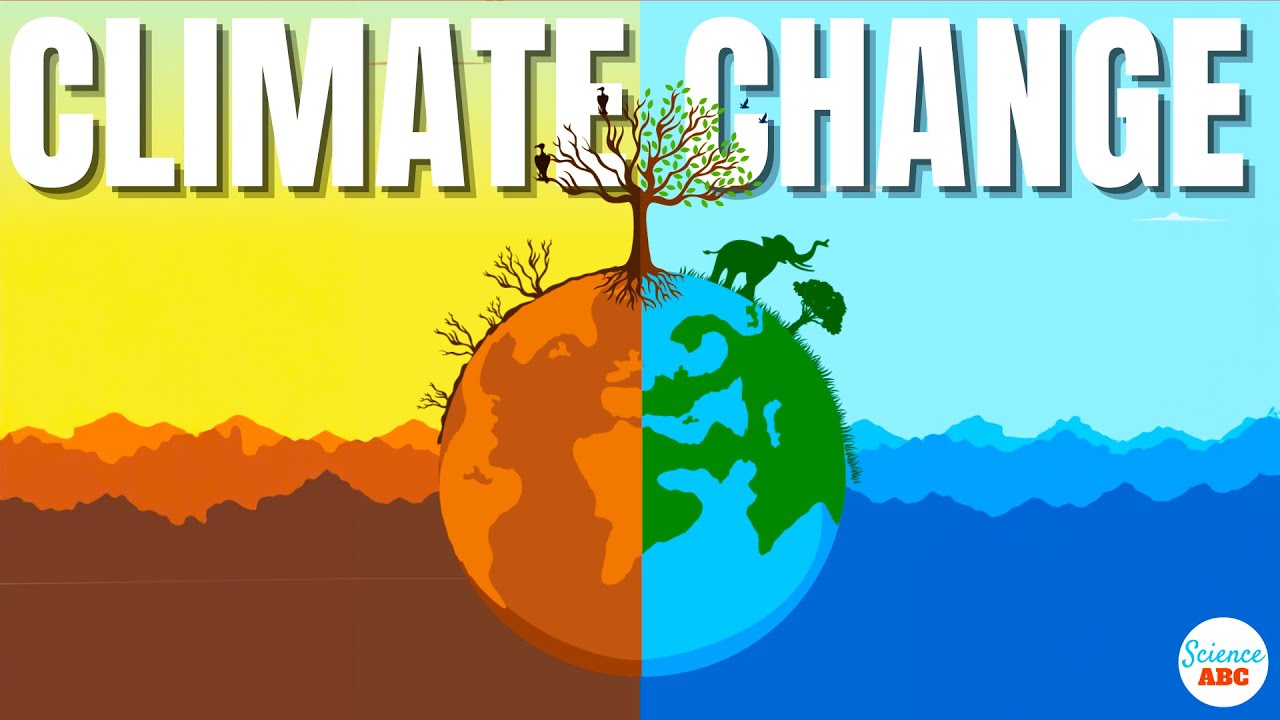Climate Research & Anthropogenic Climate Change
Summary
TLDRThis video discusses anthropogenic climate change, emphasizing human-driven causes such as fossil fuel emissions that increase greenhouse gases like CO2. It explores how the scientific consensus confirms that human activities are accelerating climate change, with models predicting a significant rise in CO2 levels by 2100. The Intergovernmental Panel on Climate Change (IPCC) has provided assessments, projecting more frequent extreme temperatures, rising sea levels, and severe impacts on ecosystems and species. The video also explains the role of climate models, which simulate future climate scenarios based on various factors like emissions, ocean temperatures, and atmospheric changes.
Takeaways
- 😀 The scientific consensus is that the current climate change is primarily due to human activities, specifically the enhanced greenhouse effect caused by greenhouse gas emissions.
- 🌍 Emissions from fossil fuels (coal, oil, natural gas) are the main contributors to rising greenhouse gas concentrations in the atmosphere.
- 📊 The CO2 levels in the atmosphere are at their highest in 800,000 years, currently at 412 parts per million (ppm), and could reach 1,000 ppm by 2100 if trends continue.
- 📝 The IPCC (Intergovernmental Panel on Climate Change) reports that there is 95-100% certainty that human activities are driving the current climate change.
- 📚 The majority of nearly 14,000 peer-reviewed articles between 1991-2012 support the view that humans are causing climate change, with very few dissenting opinions.
- 🌡️ Climate models show that we are currently on the gentle side of a warming slope, but future impacts are expected to accelerate dramatically as climate change compounds.
- 🔍 Models are used to predict possible climate outcomes by inputting various factors, such as solar radiation, greenhouse gas concentrations, and weather patterns, to estimate future scenarios.
- 🔄 Climate modeling involves general circulation models (GCM) that divide the planet into three-dimensional boxes to study interactions between the atmosphere, ocean, and ice over time.
- 🌎 Climate models give a range of probabilities for future climate scenarios, emphasizing the uncertainty and variability in predictions rather than specific outcomes.
- ❄️ The IPCC's 2014 findings indicate that global sea levels will continue rising, extreme hot temperatures will increase, and polar regions will warm faster than the global average, affecting species and ecosystems.
Q & A
What is anthropogenic climate change?
-Anthropogenic climate change refers to climate change that is caused by human activities, particularly through the emission of greenhouse gases from fossil fuels like coal, oil, and natural gas.
What is the primary cause of current rapid climate change?
-The primary cause of the current rapid climate change is the human-enhanced greenhouse effect, driven by human emissions that increase the concentration of greenhouse gases in the atmosphere.
What role do greenhouse gases play in Earth's climate?
-Greenhouse gases absorb longwave radiation (terrestrial radiation) that is reflected from Earth's surface, which helps to warm the lower atmosphere. This process is crucial for maintaining Earth's temperature but becomes problematic when there is an excessive amount of these gases.
What has been the historical fluctuation of CO2 levels, and where are they now?
-Historically, CO2 levels have fluctuated between 180 to 300 parts per million over the past 800,000 years. As of 2020, CO2 levels have risen to 412 parts per million, the highest in recorded history.
What is the IPCC, and why is it significant in climate research?
-The IPCC (Intergovernmental Panel on Climate Change) is the leading global body for assessing the science related to climate change. It is composed of hundreds of scientists from over 100 countries and plays a crucial role in compiling and publishing scientific reports on climate change. It won the Nobel Peace Prize in 2007.
How does the IPCC assess climate change?
-The IPCC publishes comprehensive assessments, such as the Fifth Assessment Report (2014), which compiles the latest scientific data on climate change. These reports are peer-reviewed and provide an authoritative overview of climate science, including predictions for the future.
What are climate models, and how are they used in predicting future climate change?
-Climate models are mathematical representations that simulate how various factors, like greenhouse gases, ocean temperatures, and solar radiation, interact to influence Earth's climate. These models are used to predict a range of possible future climate scenarios based on different levels of emissions and other variables.
How do climate models differ from epidemiological models, such as those used during the COVID-19 pandemic?
-While both climate and epidemiological models use data to predict future outcomes, they differ in their focus. Climate models predict long-term trends based on factors like greenhouse gases and solar radiation, while epidemiological models focus on health-related factors like disease transmission and hospital capacity. Both use data to generate probable outcomes, but the context and specific variables differ.
What are General Circulation Models (GCMs) in climate modeling?
-General Circulation Models (GCMs) are a type of climate model that divides the planet into three-dimensional boxes to simulate the interactions between the atmosphere, oceans, and ice. These models help to predict climate change by understanding how these systems interact over time.
What were some of the findings in the IPCC’s Fifth Assessment Report regarding global temperatures and polar regions?
-The IPCC’s Fifth Assessment Report predicted a rise in global temperatures by 0.5 to 1.3 degrees Fahrenheit by 2035, with hot temperature extremes becoming more frequent. They also found that polar regions are warming faster than the global average, and ice sheets in Antarctica and Greenland are losing mass.
Outlines

This section is available to paid users only. Please upgrade to access this part.
Upgrade NowMindmap

This section is available to paid users only. Please upgrade to access this part.
Upgrade NowKeywords

This section is available to paid users only. Please upgrade to access this part.
Upgrade NowHighlights

This section is available to paid users only. Please upgrade to access this part.
Upgrade NowTranscripts

This section is available to paid users only. Please upgrade to access this part.
Upgrade NowBrowse More Related Video
5.0 / 5 (0 votes)





